Elvia Teotski
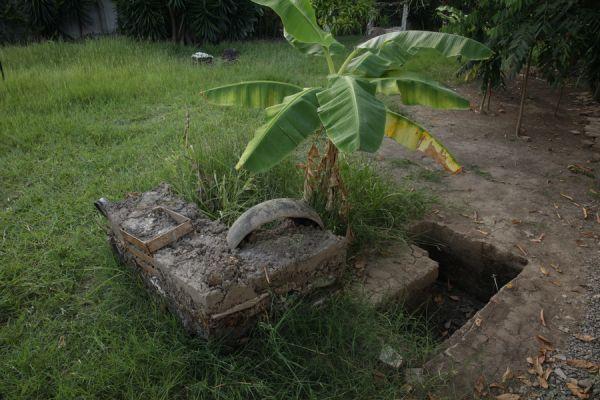
Fundacion Casa Proal, San Rafael, Mexico, 2019
Edges of the underworld
Elvia Teotski
We walk upon earthen mounds
passing beside them without taking notice, paying no attention.
Erected here and there, they provide the landscape with a slight rise.
Every plot has been exploited.
Overexploited.
Today they’re covered in citrus and banana trees.
The treasure collected.
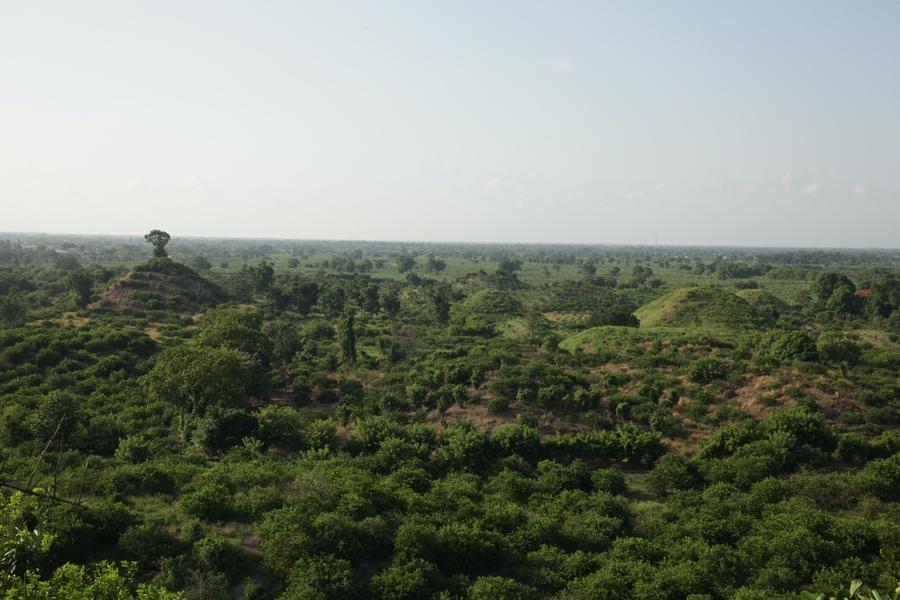
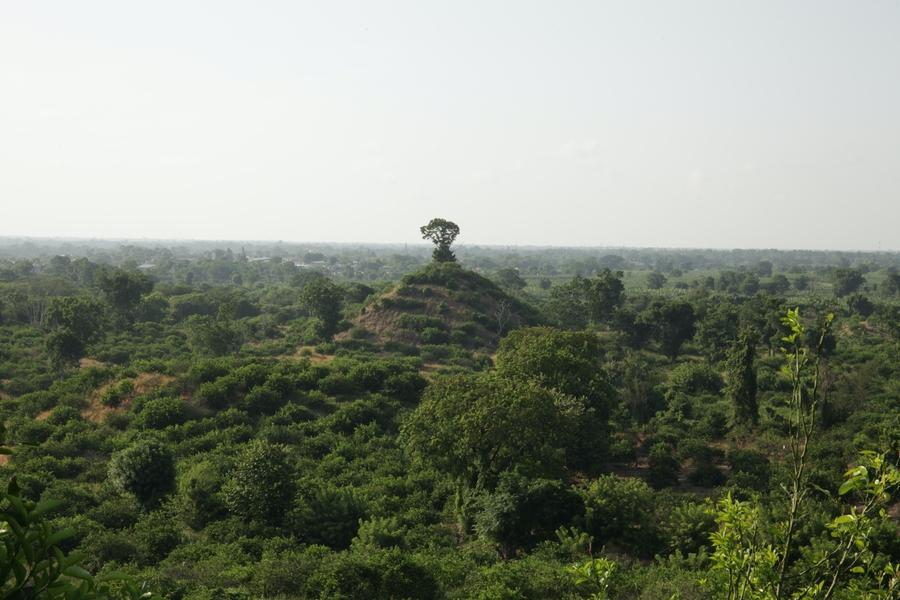
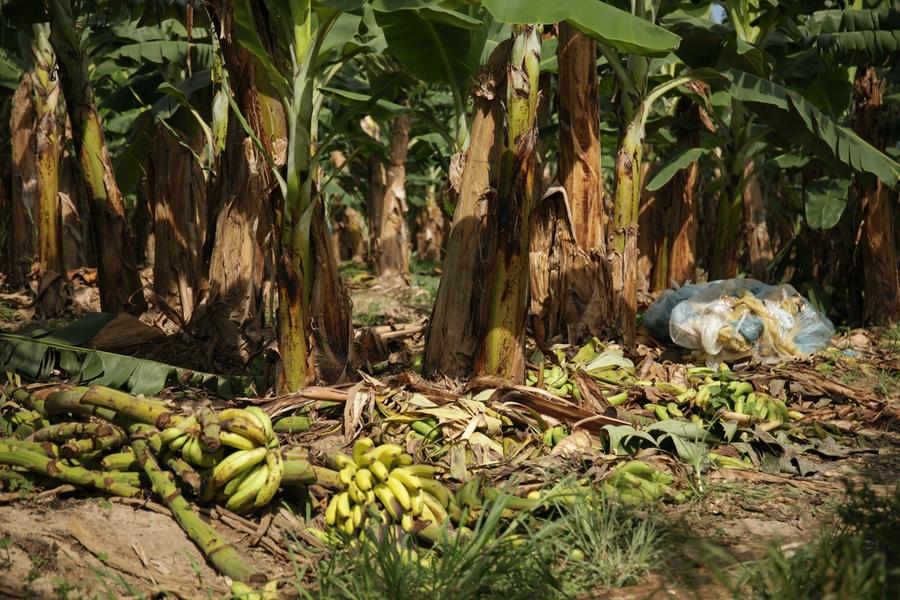
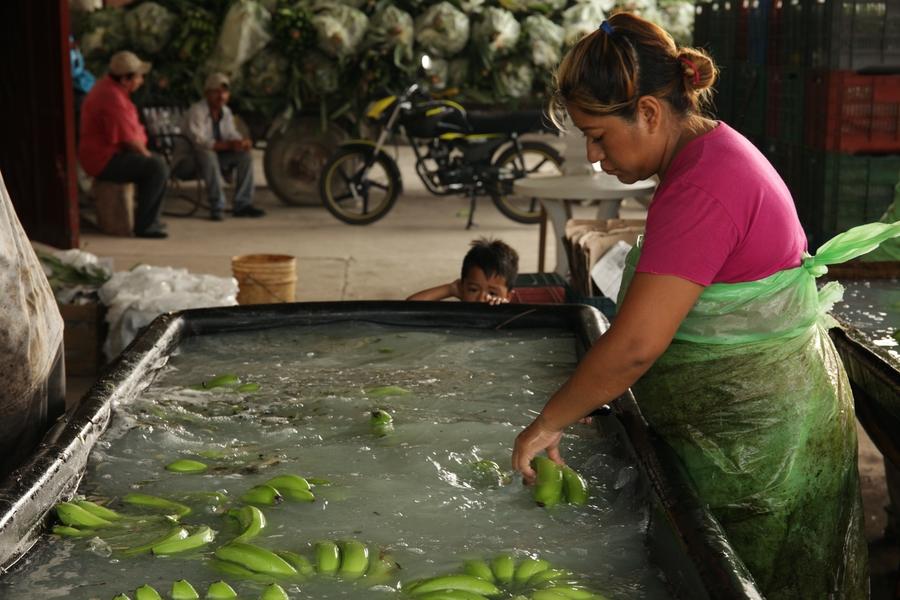
Treasures are buried beneath the mounds—treasures of the Totonac civilization that lived by the banks of the Rio Filobobo before the farmers arrived.
One imagines hunter-gatherers climbing this vantage point to look out for boars and tigers, finding fruit trees in flower or medicinal plants that stop hemorrhages and cure fever, making sacrifices.
The pyramids haven’t been razed. We casually build on and around them. As for works of archeological interest, they’re collected, exchanged, and in many cases, buried again. Should these things really be shut up in museums? Are we refusing the loss of these temporally defined items, while insisting that they’re just relics? This, when the act of preservation defies loss by controlling the entire conservation process: humidity, temperature, exposure to light, air quality, precautions and procedures for manipulation, relocation...
Here, in San Rafael’s tropical weather, conservation conditions are far from met. Decomposition accelerates, even beyond today’s plastics or wax papers that have, for a decade now, replaced banana paper, an object that used to be manufactured through waste recovery at the banana farm.
We turn in circles
around these mounds and bagged bananas.
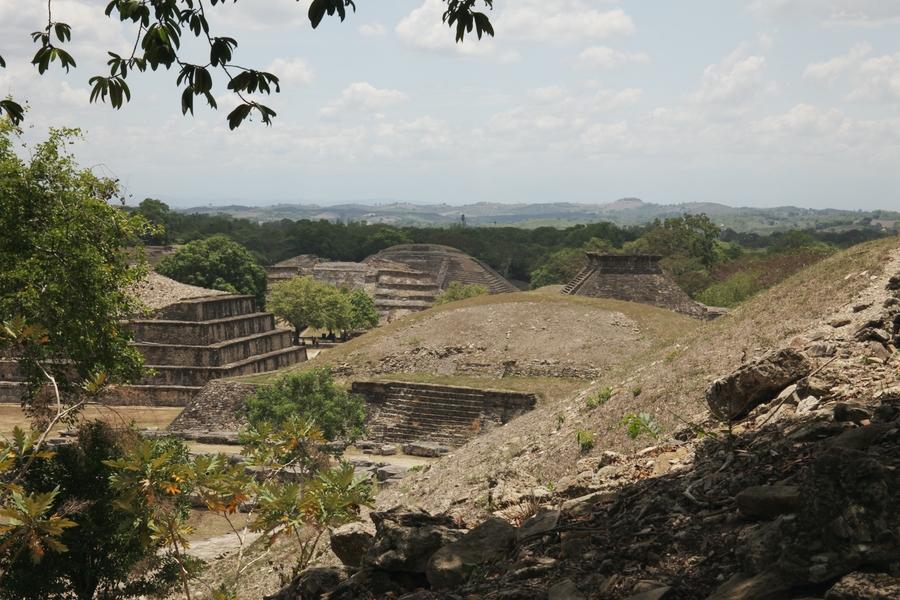
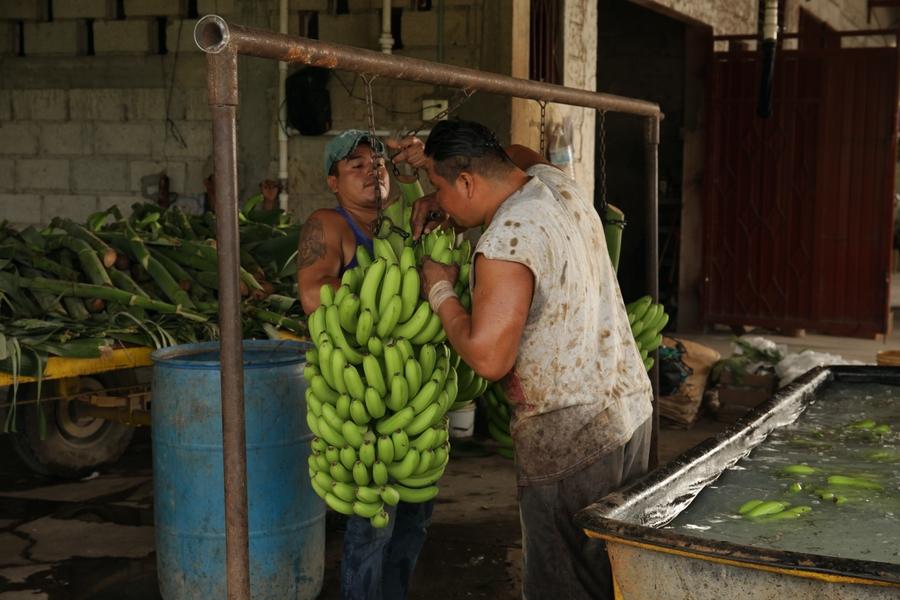
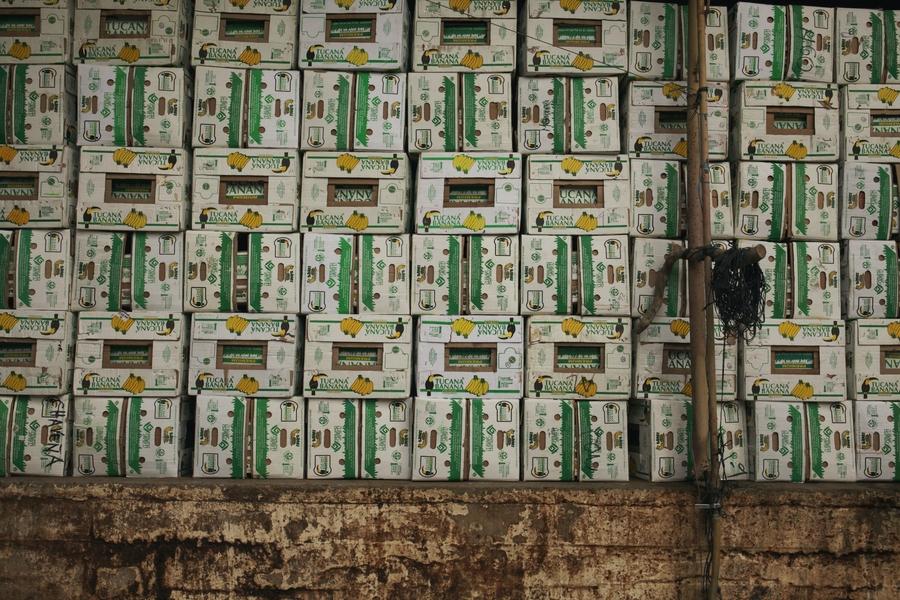
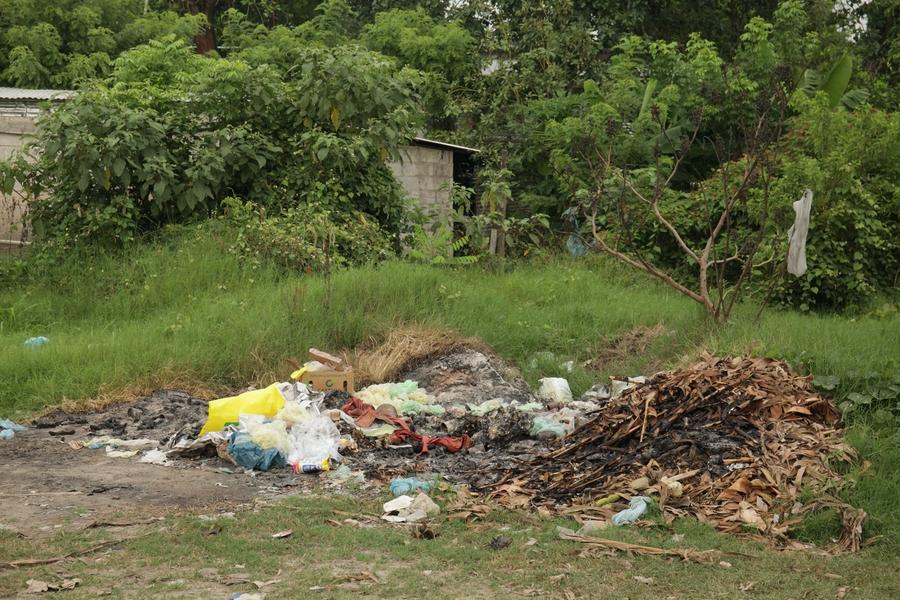
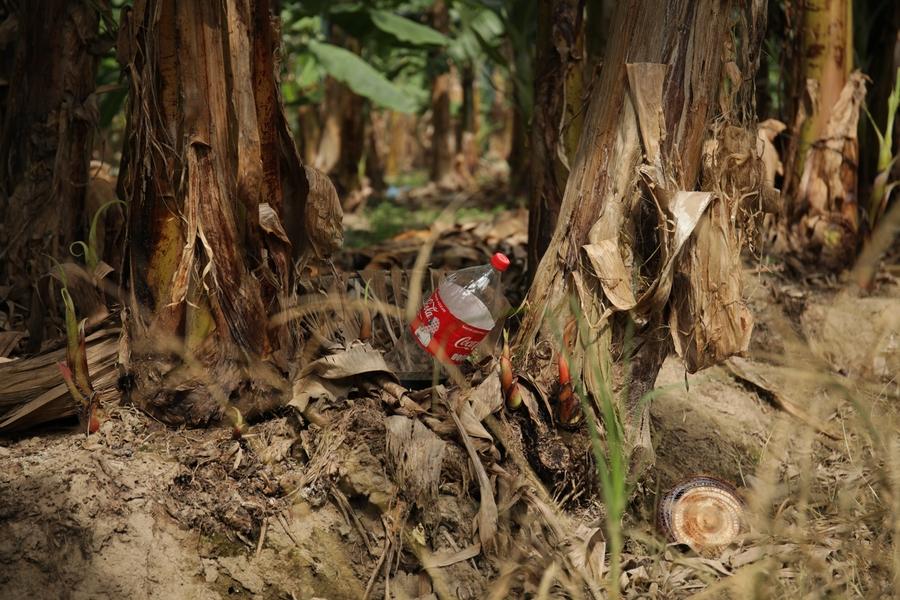
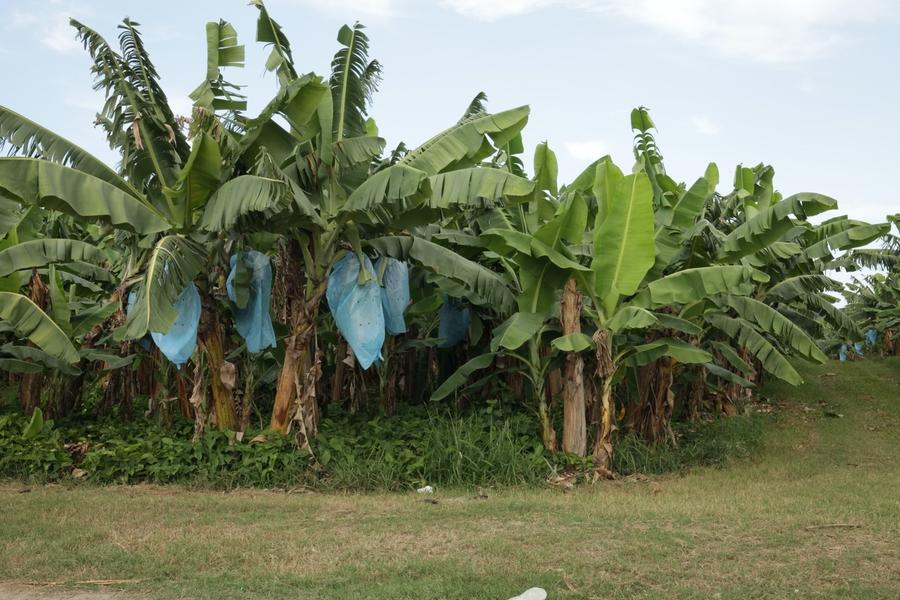
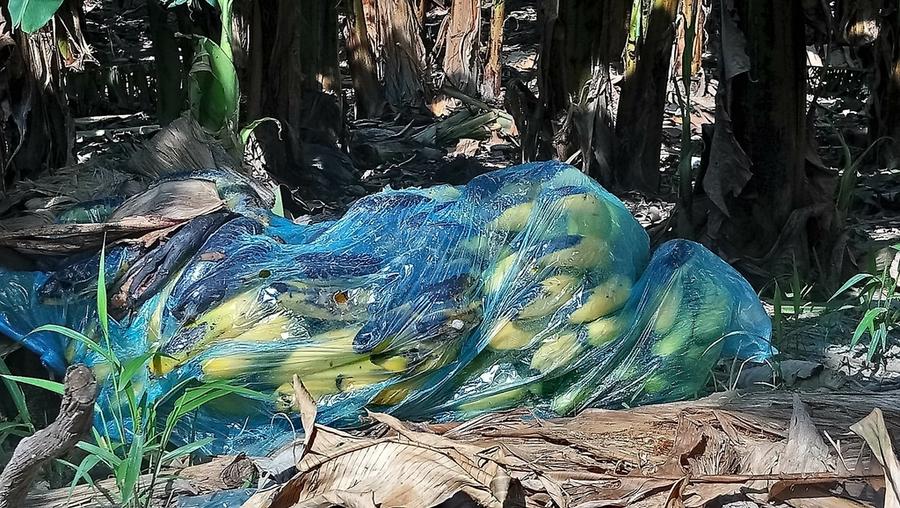
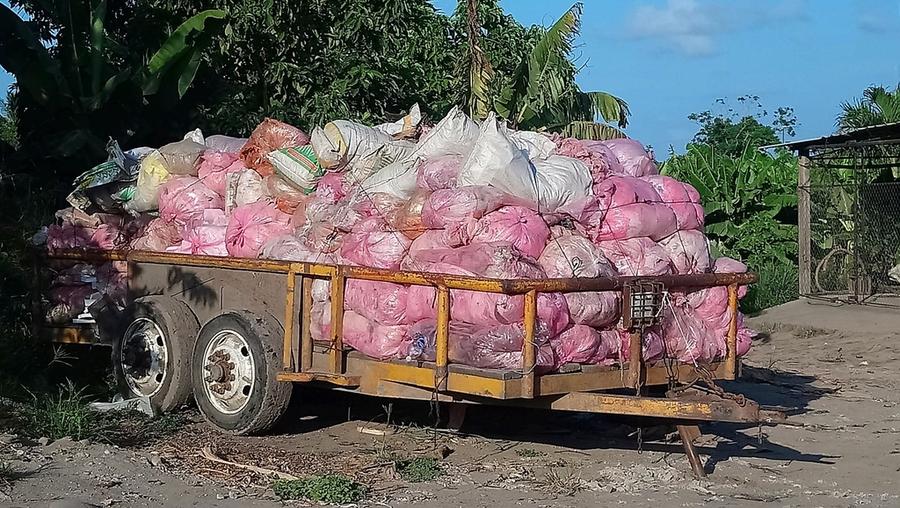
The old relics resist the new Anthropocene, like blue crab populations trying, for better or for worse, to cross coastal roads, dangerously darting through the wheels of loaded two-trailer trucks. Their decline is an indicator of industrial activity’s ecological footprint in the Gulf of Mexico, i.e. pollution in rivers and along the Mexican coastline.
The full moon illuminates the top of the mounds
And on its hidden side
The crabs begin their perilous crossing.
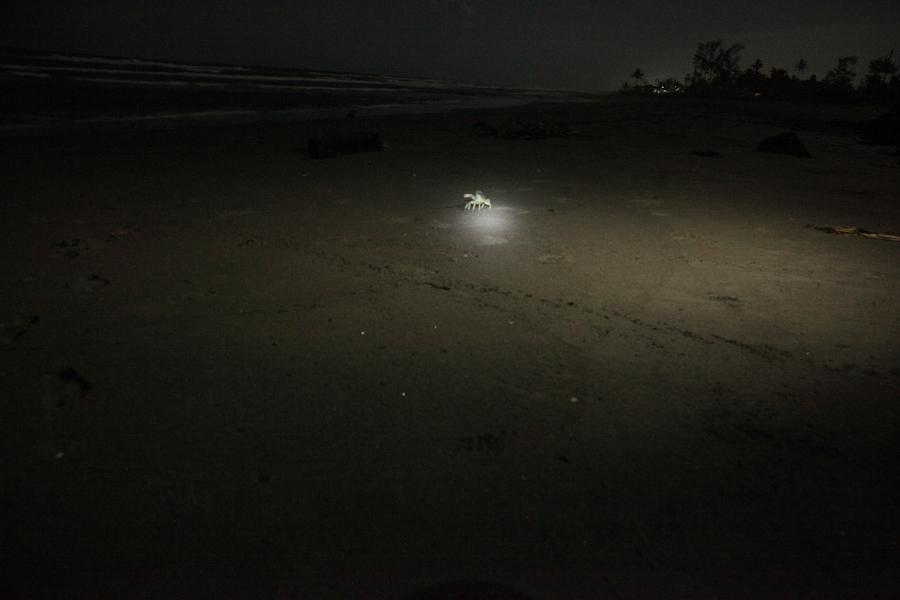
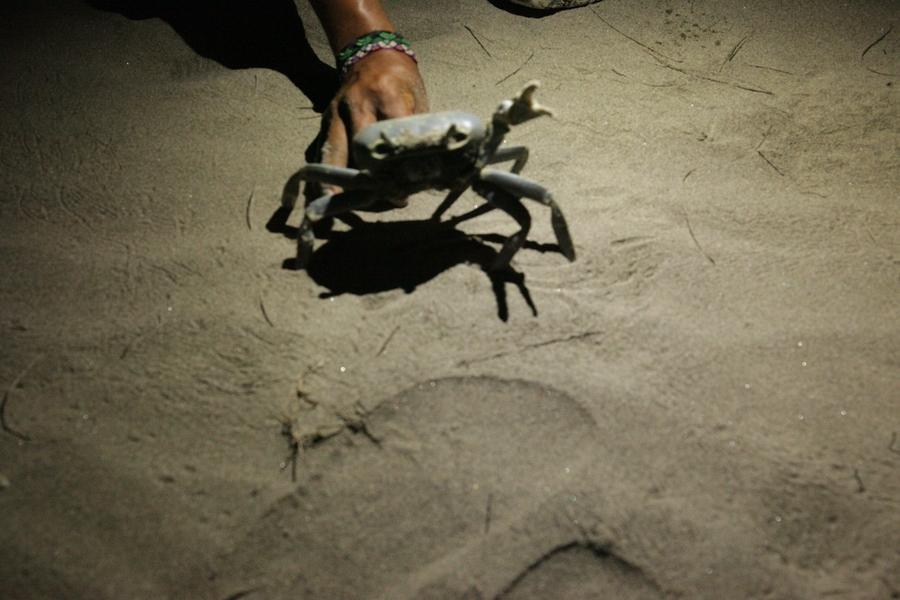
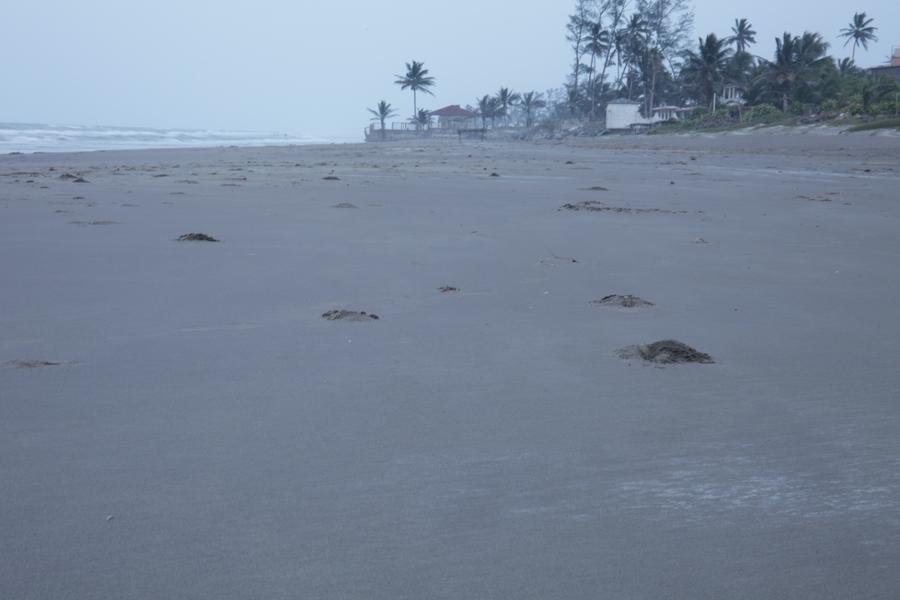
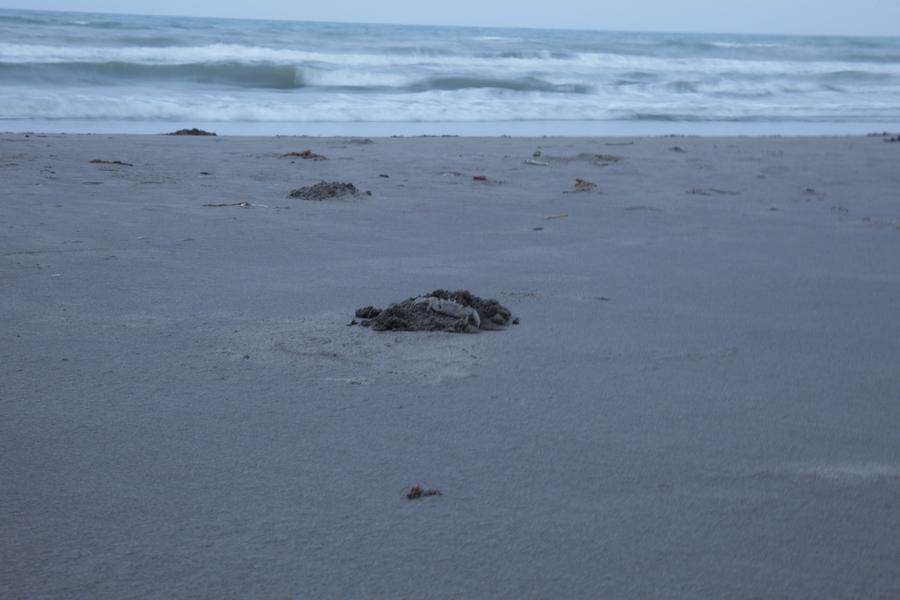
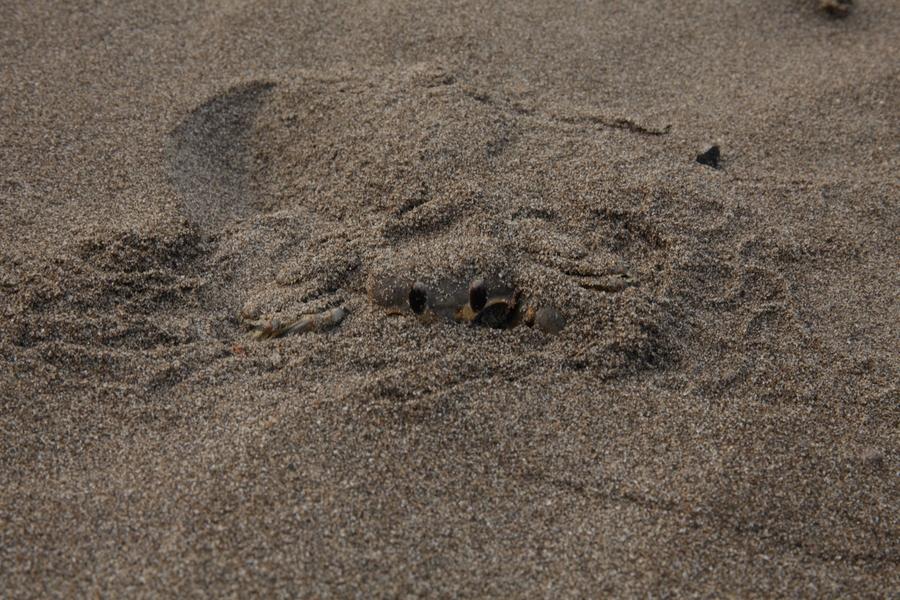
Near the deserted pyramids, new ones arrive in the “mezcla.” Houses made of cinder block and new materials that insulate poorly are found beside old, French-style buildings.
A hurricane sweeps in.
Everything blows away.
Plants take over.
Building on top of the ruins of ancient civilizations, leaving these concrete structures to the elements…these are trademarks of a new civilization, one that seeks profit at any price—at the cost of the environment, which has no price.
Planted at the end of Casa Belin garden,
aligned with excavation pits left open by a team of archeologists,
concrete pillars and sections of earthen brick wall appear.
A work site is in progress, pending.
Another.
A mound of earth surrounds it,
or the wall crosses the mound of earth…
Ruin against ruin, they rest together, supporting each other.
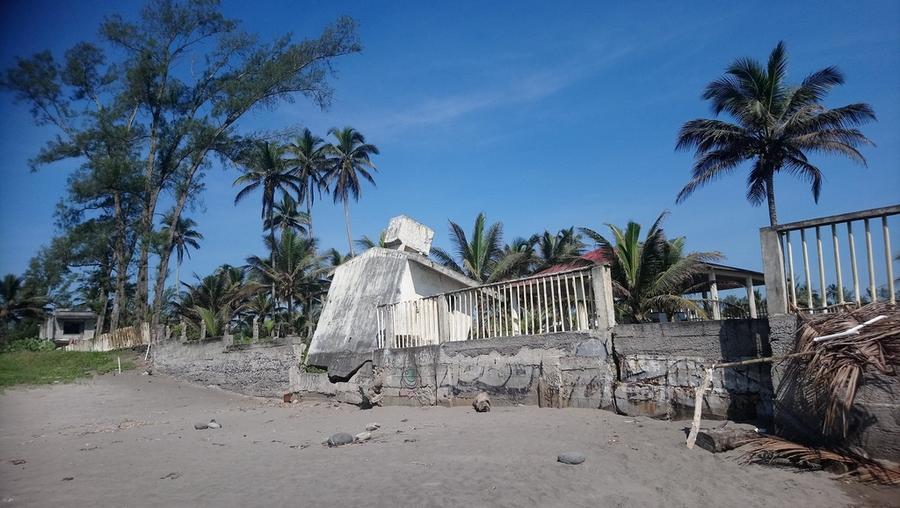
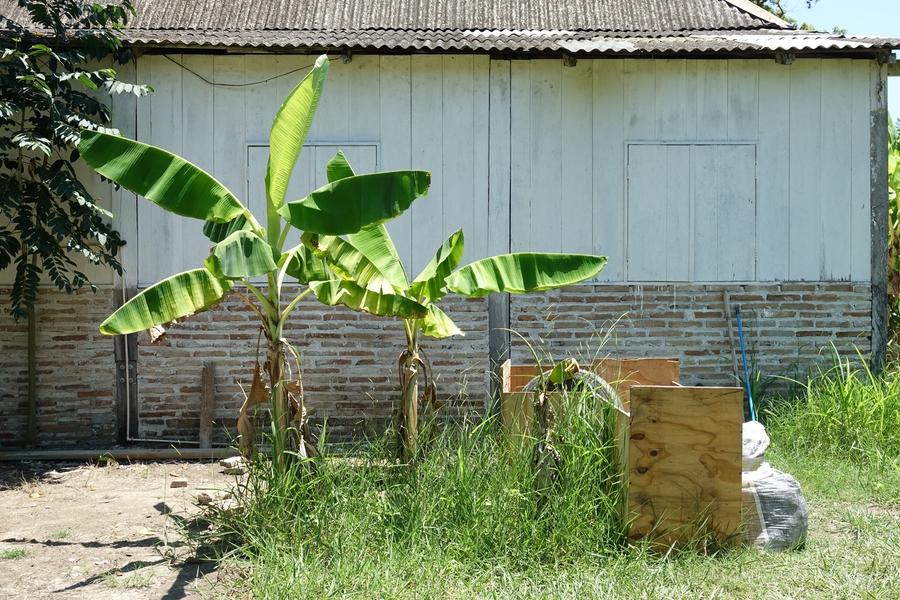
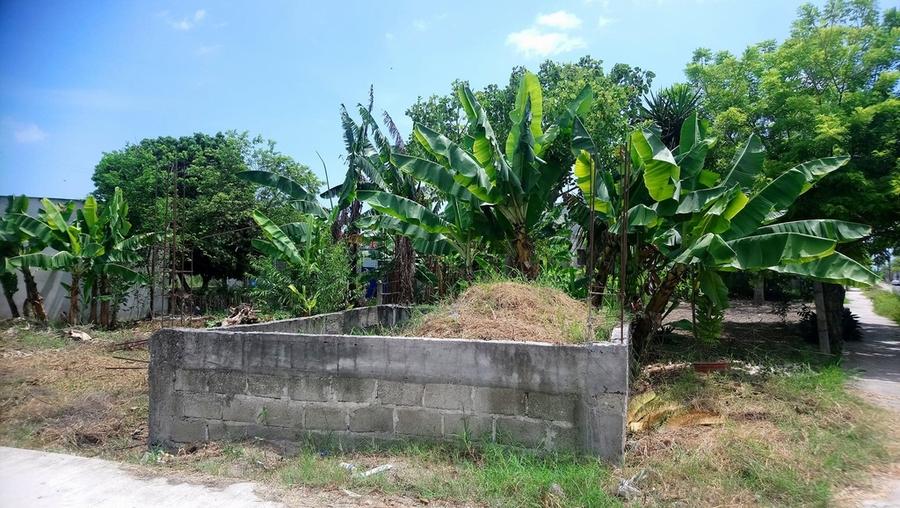
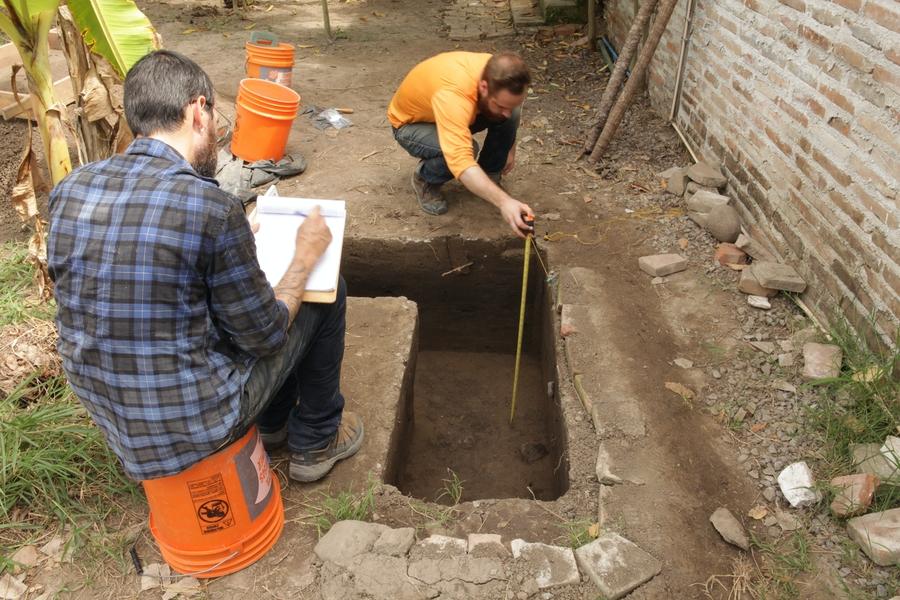
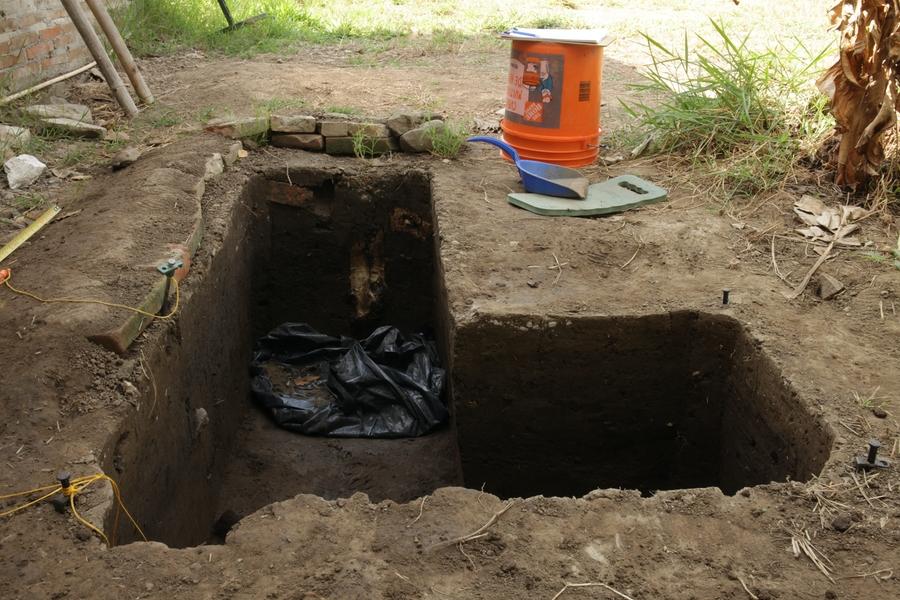
Transformations of the urban and agrarian landscape are in fact the subject of the installation at the end of the garden. From the monocultures in succession, bananas and citruses, from endless meadows welcoming extensive herds of cattle and horses for big ranchers, to the meager place left for an almost non-existent subsistence agriculture, the landscape never stopped changing, nor the habitat and its inhabitants. Bananas buckle under the weight of increasingly costly agrochemicals, which become less efficient over time in the face of resistance by insects and diseases. Young lemon trees are already settling in among the blighted crops, waiting for their future development.
But the spirit of harvesting lives on. As soon as the various fruits mature, they’re picked by the local population. It’s the treasure of the region, its great wealth.
The nopal and pitayas
are the masters of ceremony.
Planted on the mounds of earth,
surrounded by concrete pillars,
they stand and occupy the site like guardians of the temple.
Ode to recolonization.
Not by the West this time, a local one,
using endemic strains.
Only the cactuses resist the long periods of drought.
Their fruits ensure vitamins.
Thus the dragons watch over us.
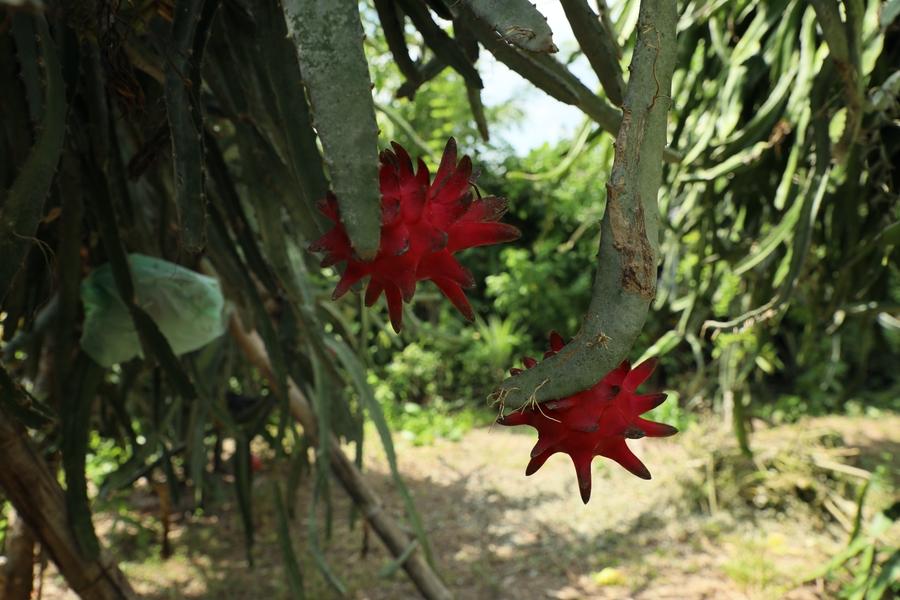
Archeologists dig in the Casa Belin garden,
forming square holes.
Not one, but two…three…five—ten in all,
One of them, with a sleek look, ends in an L.
These minimalist, hollow forms hold many secrets.
There’s not an ounce of gold here but different strata of residue,
sediment from old inhabitants
from the age of French colonization,
here, in the San Rafael region.
The concretional deposits speak volumes on the lifestyles of families newly settled in the promised land along the fertile coast of the Gulf of Mexico, just as much as contemporary residue carelessly strewn upon the ground. Indeed, it piles up here and there before becoming the soil of future occupants. Nothing disappears entirely, it gets buried, only to resurface if it can’t decompose. Meanwhile, processes of decomposition accelerate in the humid tropical climate. Everything rots and agglomerates at light speed…everything except plastic, petro- and agrochemicals (for a few)—even after calcination.
I place all this residue here, right beside the open pits. Collected at the edges of roads and banana-packing facilities, the residue agglomerates through decomposition and the action of sediments produced using natural materials. Oyster shells, crushed shell, nopal mucilage, egg whites, huevos de gato: these elements make up the binders inspired by the original Totonac recipe known as estuco. Another binder is a mix of clay and straw, which make up the local form of rammed earth: adobe. Though very resistant to local weather conditions, this organic material has been replaced today by industrial cement.
Buried underground in banana orchards,
agglomerated in formworks then left exposed,
the waste will reappear, one unit at a time, during the next wet season,
it will (re)surface in this garden,
before the very eyes of those who discarded it…
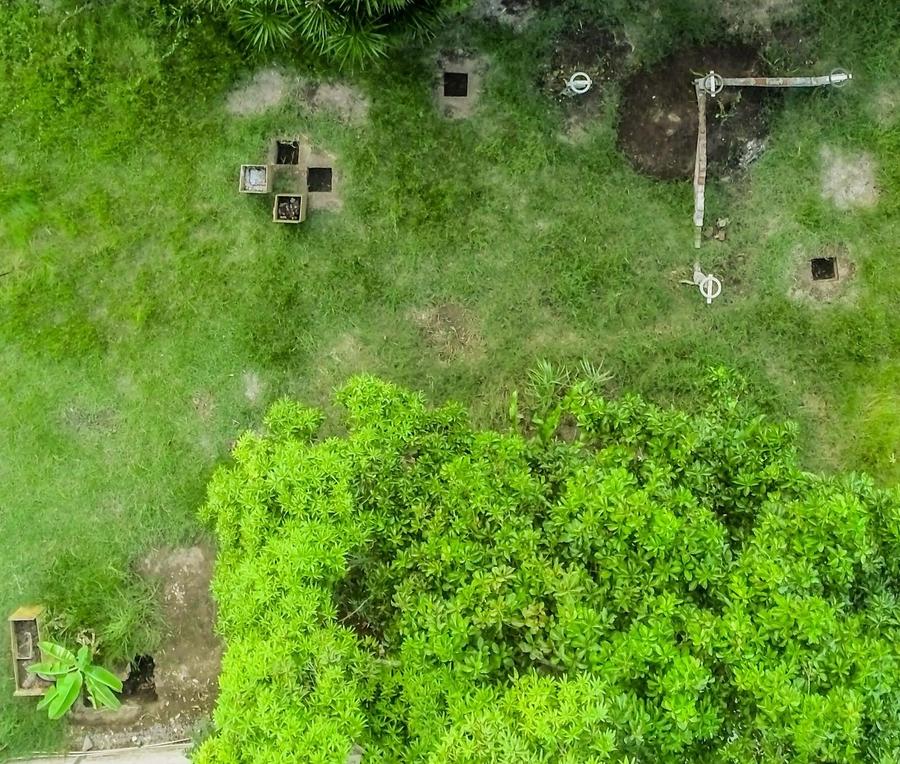
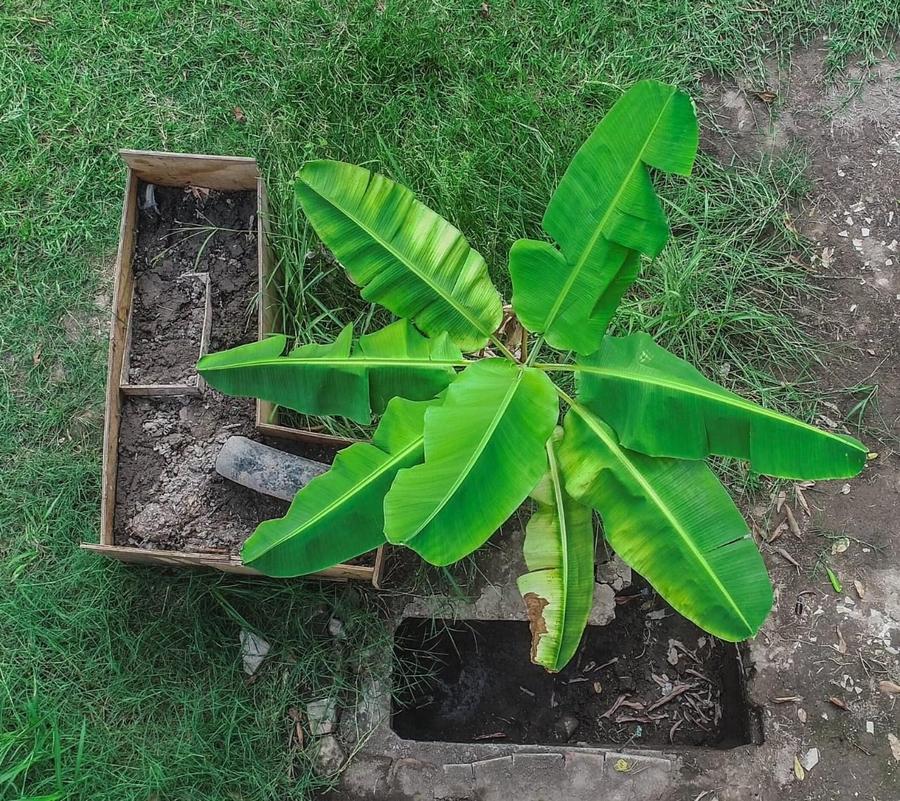
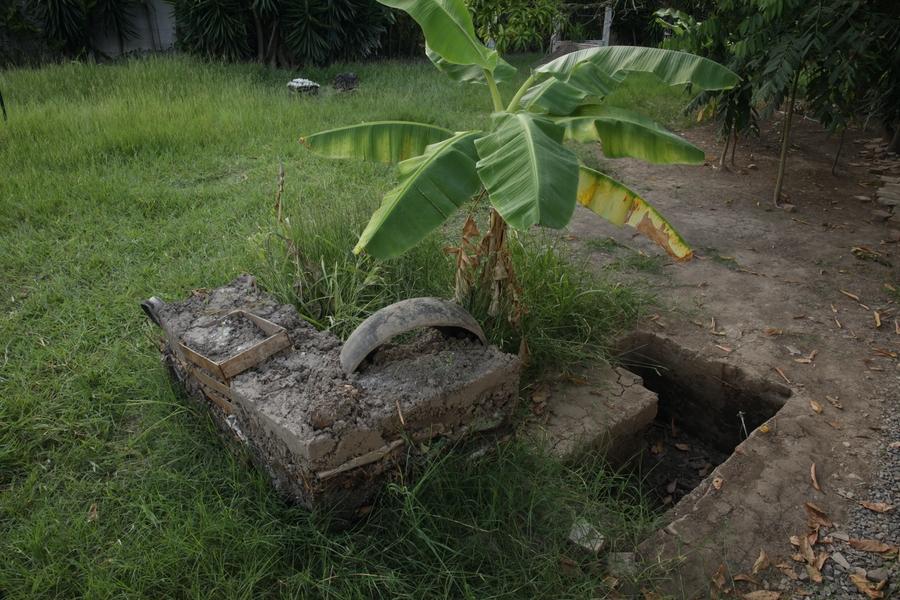
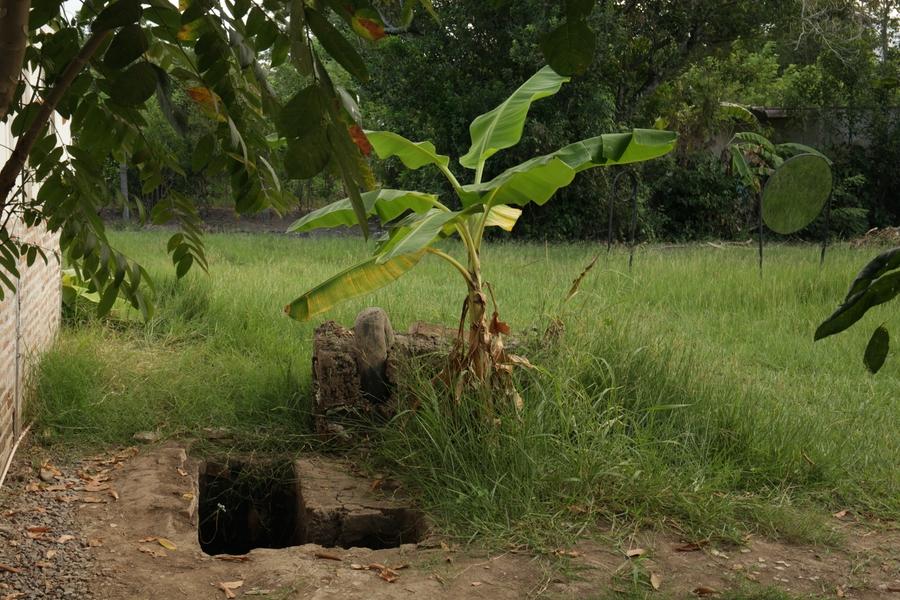
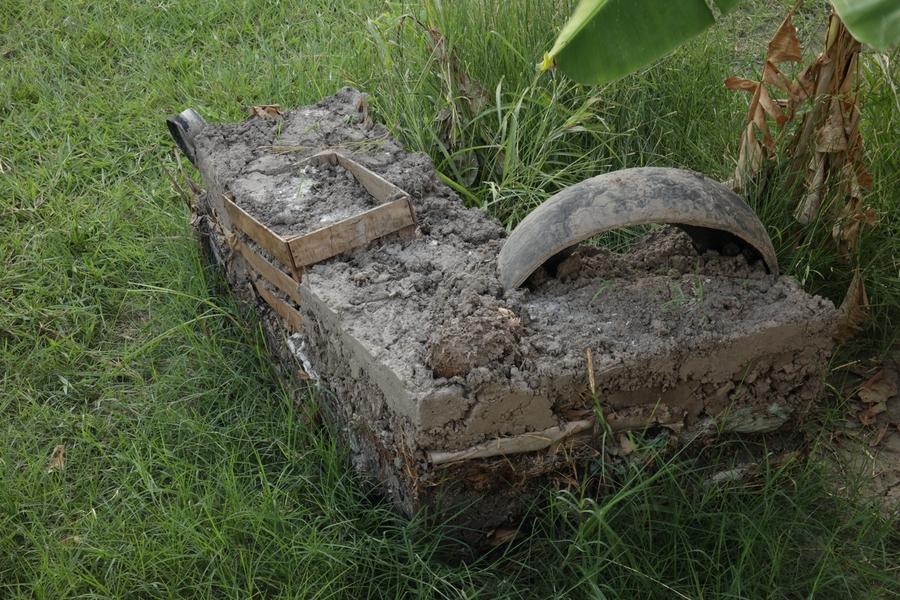
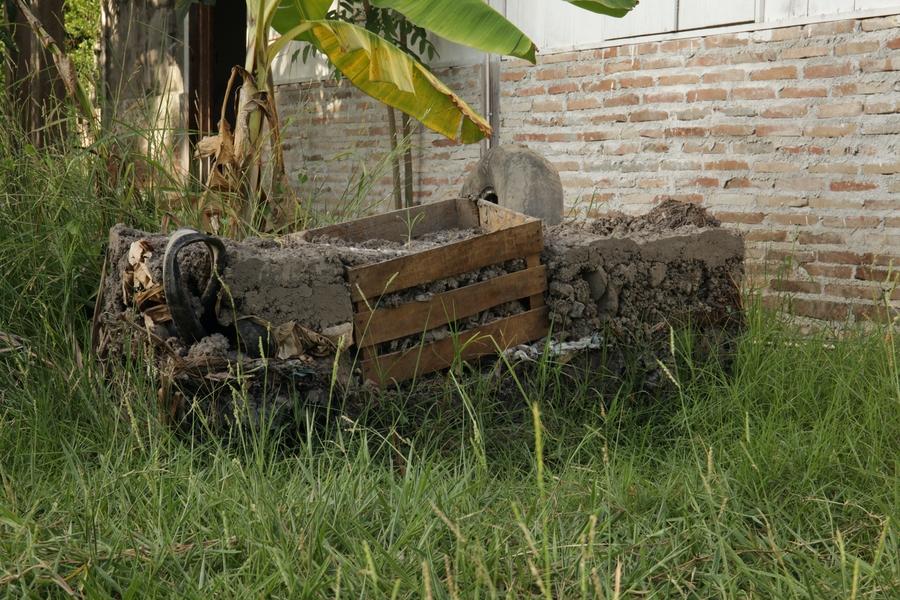
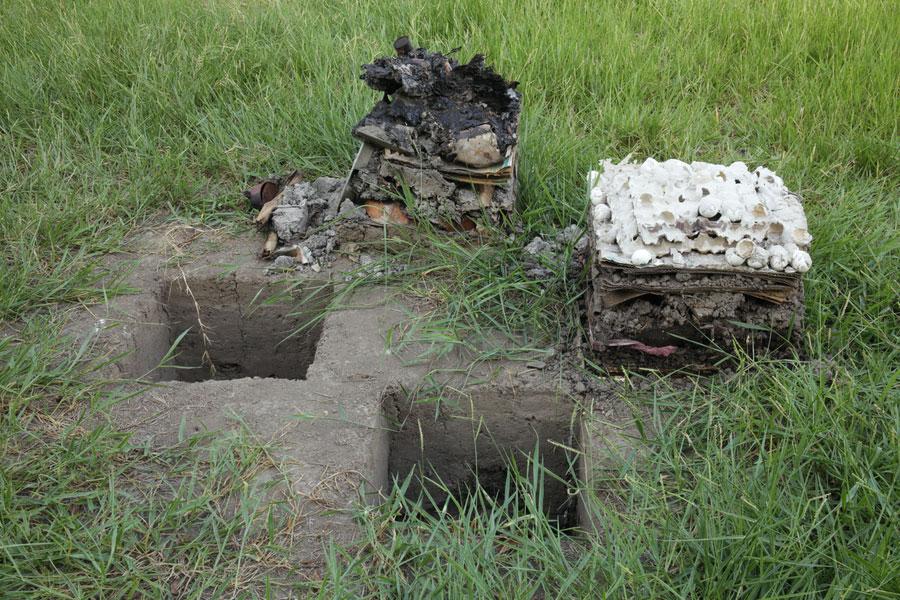
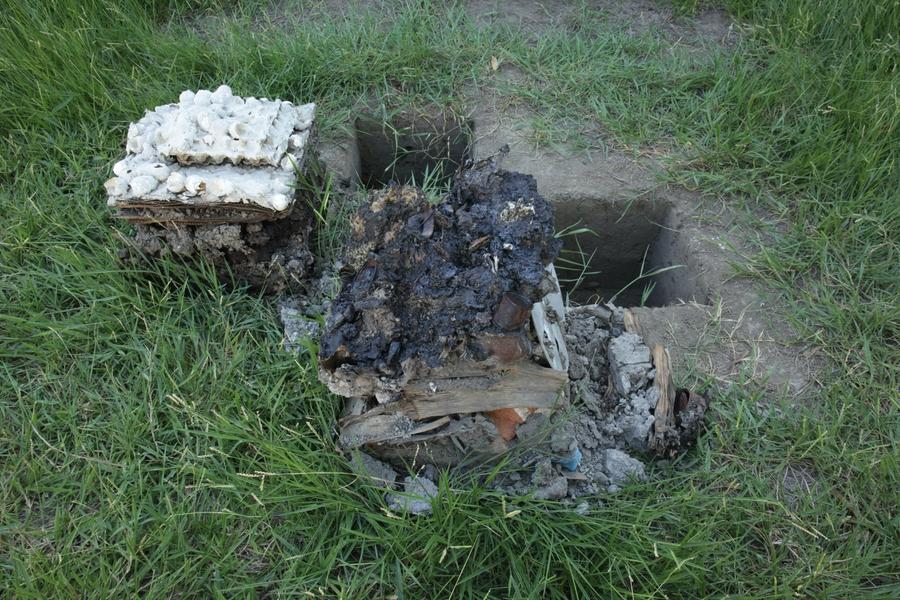
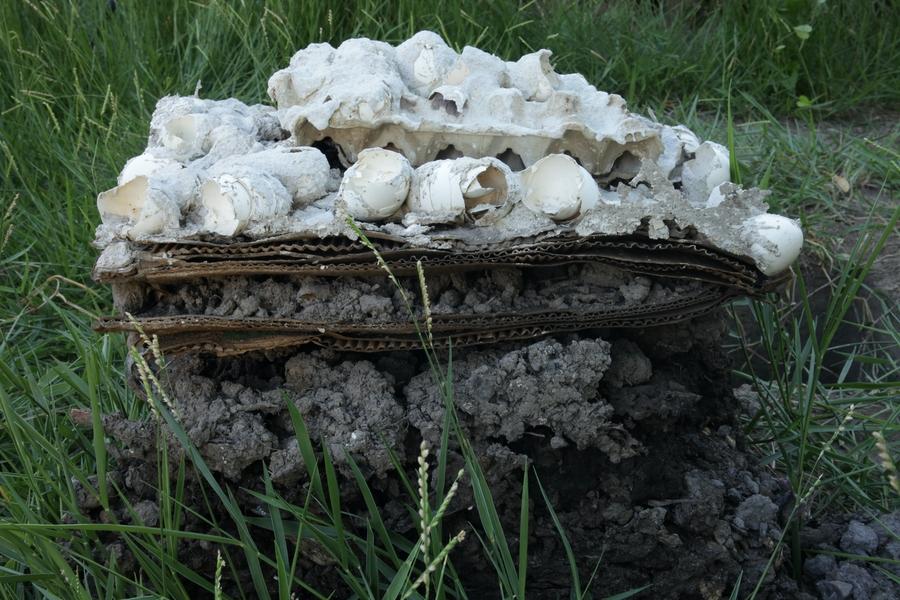
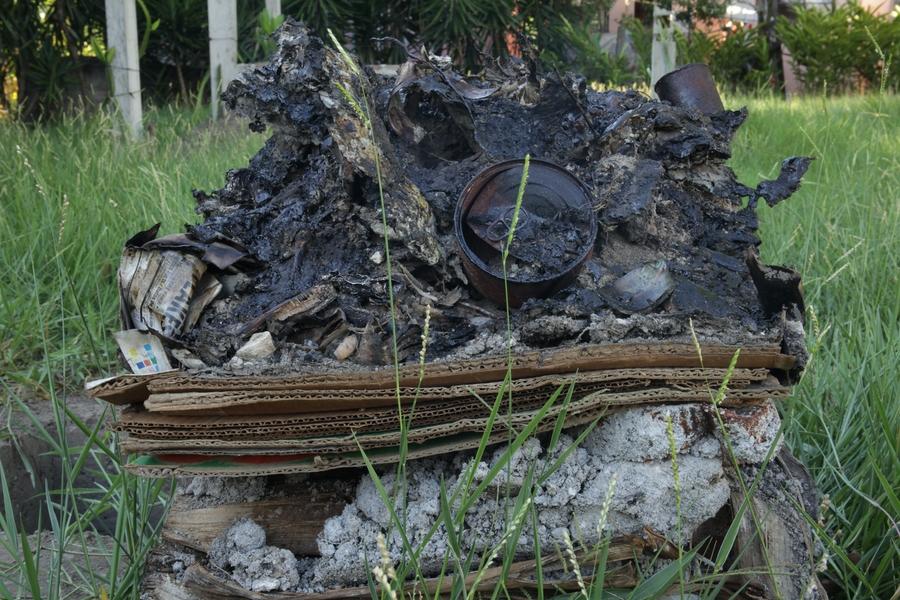
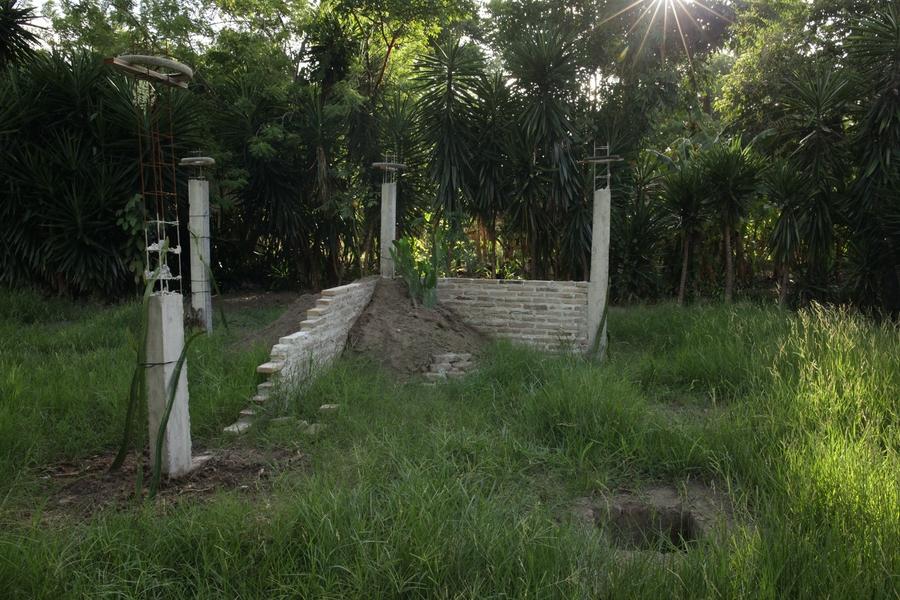
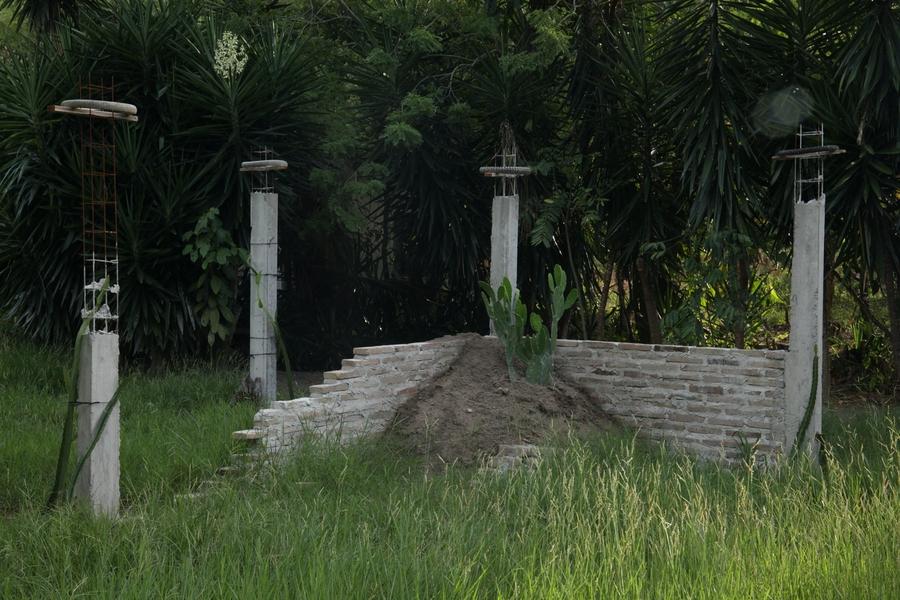
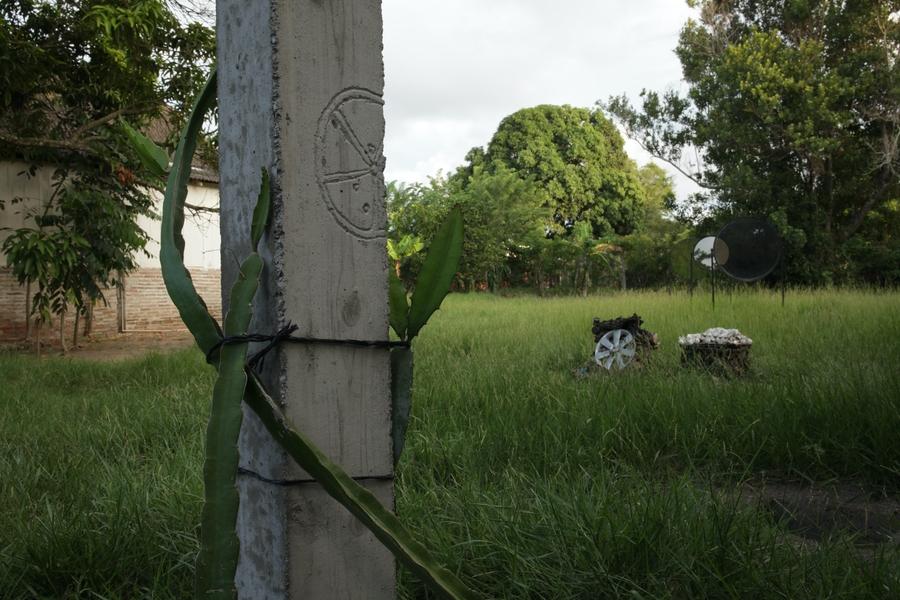
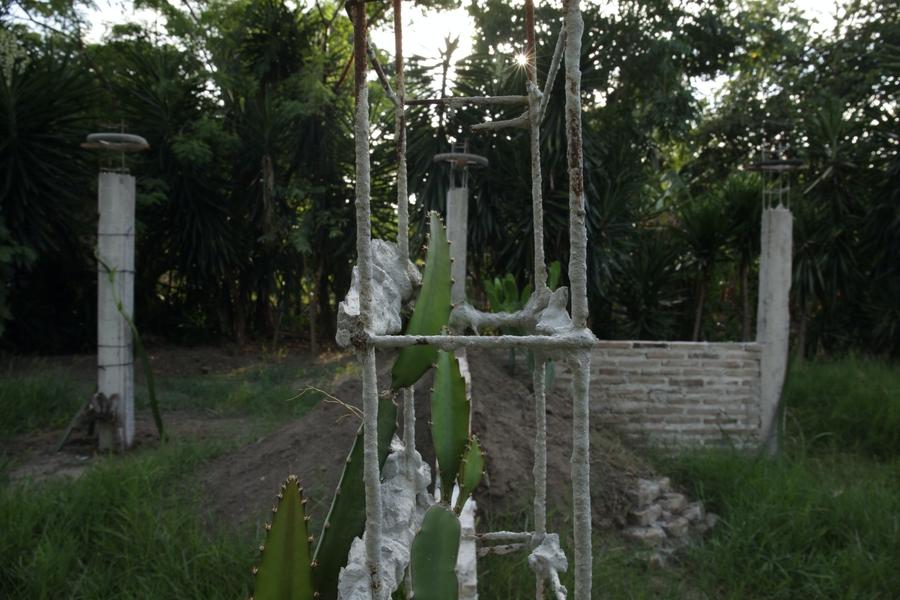
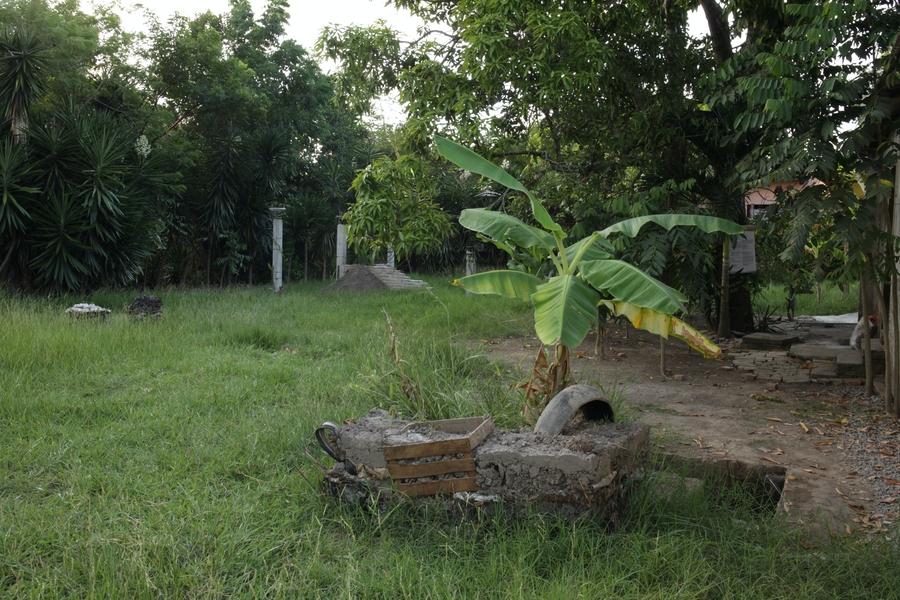
Una tombola
Gilles A. Tiberghien
Elvia Teotski could have become a cheesemaker, with her family, or a tropical plant specialist, an agricultural engineer, research biologist, botanist at a natural history museum or who-knows-what-else. But she became an artist, that is, someone who can be all those things at once, and someone for whom the multiplicity of worlds is more attractive than the specialized world of one discipline. Her domain is the living world and its conjugated cycles, fermentation, blooming and decomposition. “What I find most fascinating,” she once told me, “is the potential for transformation held within an organic form, and its resistance to deterioration, as if it’ll never die.”
Elvia turns her gaze to time and space, looking at the past as much as the future. Her interest in archeology predates her trip to Mexico, where she found this choice site not too far from the El Tajin ruins. Why not, she wondered, build a Pyramid-temple using “old bricks extracted from the ground by archeologists and the natural materials in estuco?” It’s an ephemeral monument to perishable things whose traces are ever-intriguing. Something was there, it grew, built up, died, was left to abandon. The monuments are traces of traces whose meaning is almost lost, beyond the mere presence of what once was.
But the future seeks what is not-yet here, the transformation of natural sites via new plantations and agricultural conversion, citrus monocultures, and specialized farming. Scientists can write volumes on it. The artist holding their hands will, for her part, work with images and materials. Thus, in three wooden formworks, each of which is the cut-out of an archeological excavation, the artist collects the residue of phyto–sanitary treatments as well as other waste products, such as plastic bags used to wrap bananas, cans, and mooring rope, burnt in piles then collected in the vicinity of the plantations and processing units. Then the entire thing is embedded with ash, oyster shells, egg whites and nopal mucilage, to which, like stucco found in buried palaces under the jungle, the artist ironically attributes the “dignity” of vestiges from an ancient civilization. The remains of structures or pieces of buildings seen near archeological excavations, rather than falling into ruin, seem, like those described by Robert Smithson in Passaic, to rise into ruin before they were built–we might also find a connection to his lecture on Hotel Palenque in Chiapas. The pillars are destined to be covered by Pitahaya and cacti.
Eras pass by, the earth turns, ice melts and water levels rise, typhoons tear through and destroy homes, populations migrate to escape places it no longer makes sense to live in, the ozone layer is punctured in one location, repaired in another, icebergs crack, and in 2014, a plaque was erected in Iceland to commemorate a recently lost glacier—it was the first of its kind, surely not the last. Crabs traverse la carattera with raised claws when the moon is full, going out to mate, their eyes alert. But for many, no matter their vigilance, destiny arrives in the form of a truck, crushing them before they reach the sea. It’s the lottery of life. Perhaps this is why Elvia printed her text on a newspaper page exhibiting results from the lottery, maybe in echo to a famous song, La vida es una tombola…
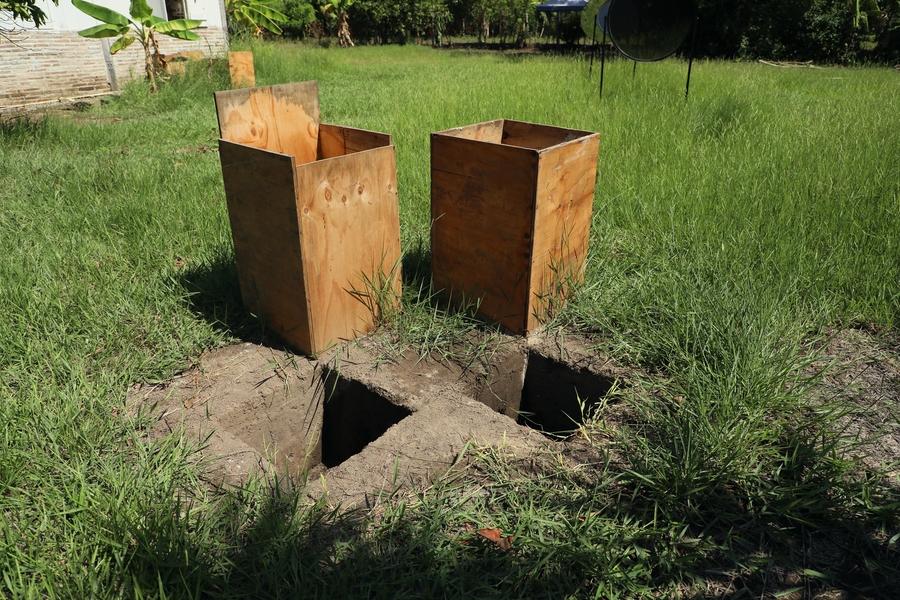
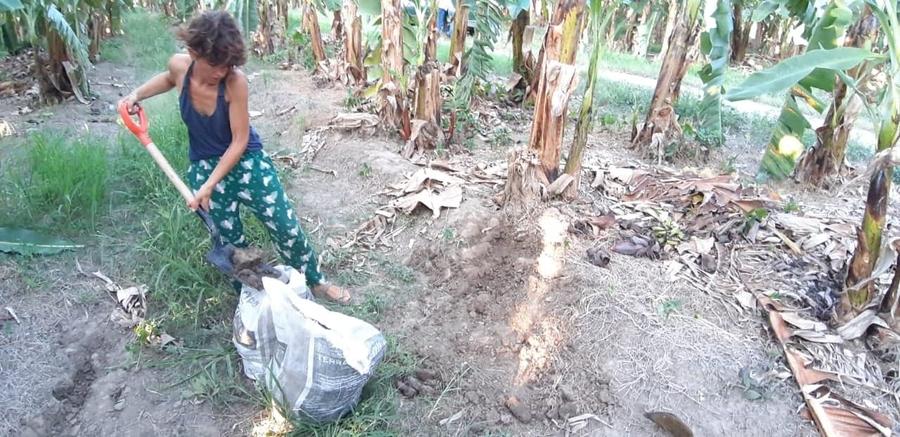
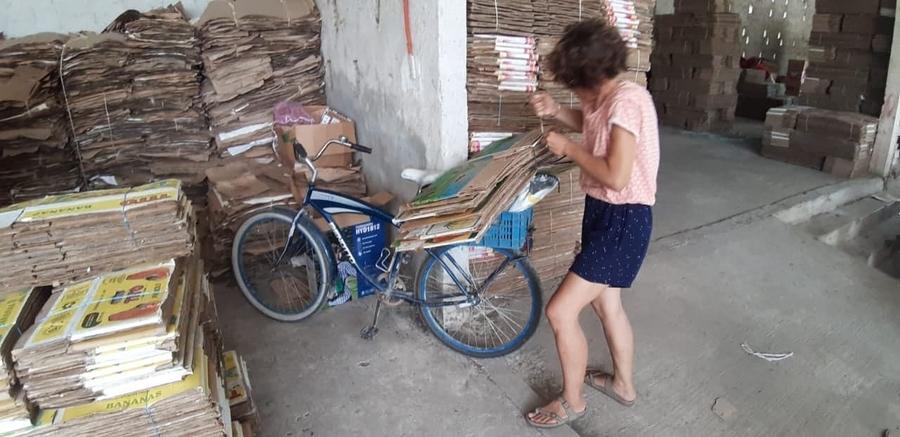
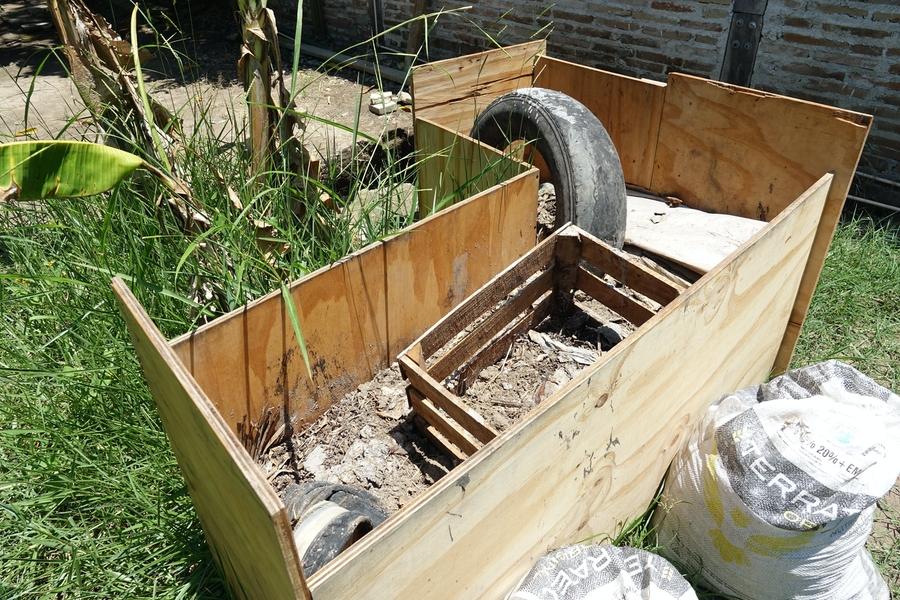
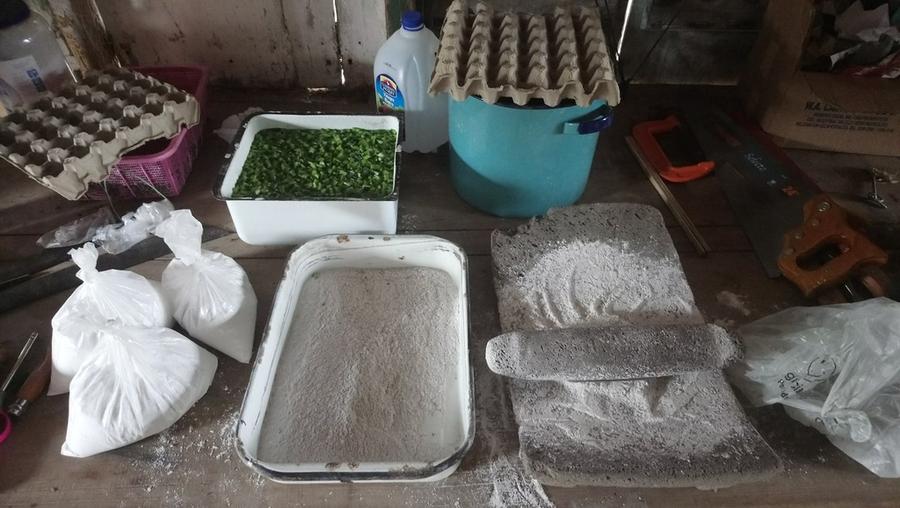
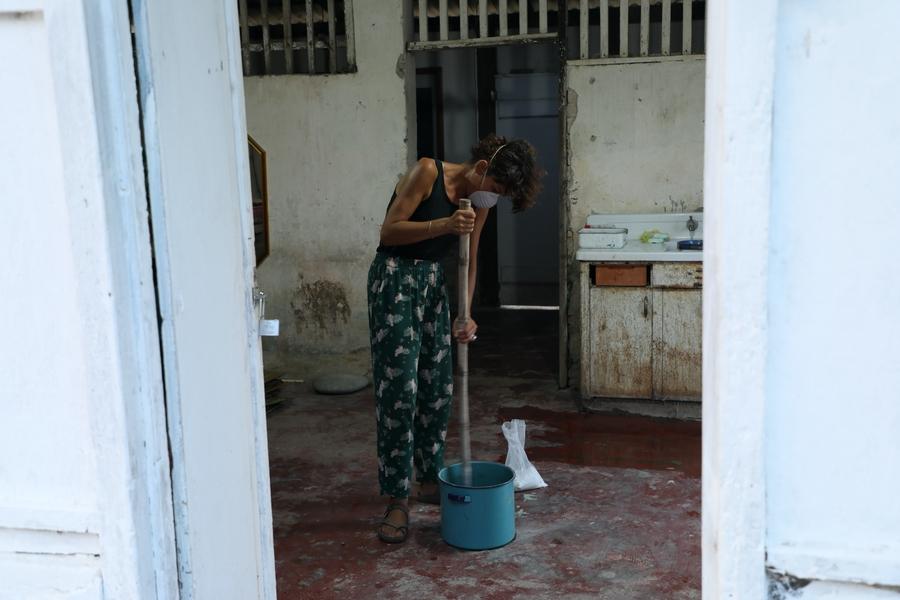
Directed by Alex Barrios in collaboration with Elvia Teotski
Produced by Fundacion Casa Proal
Images/montage: Alex BarriosVoiceover
text: Elvia Teotski
Voiceover performed by Carlos Thomas de la Cerda
Translated by Fatima Rateb; subtitles by Philippe Eydieu